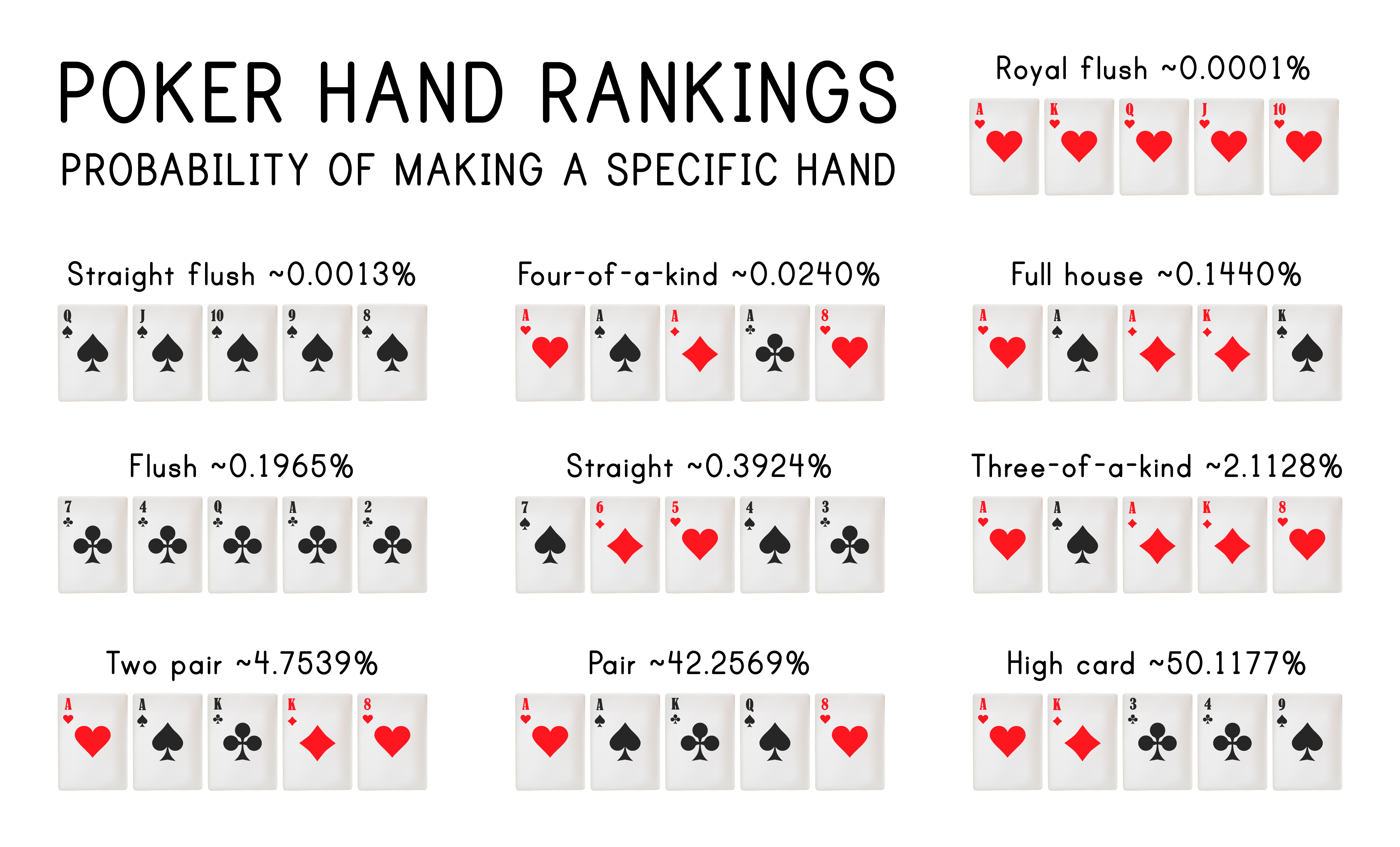Poker is a game defined by strategy, insight and experience. Of course, no outcome is ever guaranteed and this serves to lend even further intrigue into each match. While there are many aspects that need to be appreciated, it can be argued that one of the most important (and least understood) topics is the principle of hand rankings and how they can affect the outcome of a match. Let’s take an in-depth look at rankings within this article in order to shed more light upon the concept.

The Basics of Poker Hand Rankings
From the simplest point of view, poker hands are classified by the aggregate value of the cards. This tends to be common knowledge, but we should still mention that numerical cards are taken at face value while royals are all ranked as ten (regardless of the suite). Aces hold the highest value. For the sake of argument, we will assume that online poker for UK players utilises a standard deck of 52 cards (no jokers). Finally, each poker hand consists of five cards. We should still mention that more cards can be chosen to create a winning combination. It is nonetheless a fact that ONLY five cards can be presented to the table in order to claim a victory.
The Most Common Poker Hand Rankings (from High to Low)
In order to clarify things a bit, we have gone ahead and listed some of the top winning hands in descending order. This will allow you to better understand what you should be looking for as well as which combinations can prove to be the most likely to result in a win.
Straight Flush
Assuming that there are no wild cards included, a straight flush consists of five cards within the same suite which are in the correct numerical sequence. Here are two examples:
- 8, 9, 10, jack, queen
- 3, 4, 5, 6, 7
In the event that two players possess a straight flush, the one who holds the highest top card will walk away a winner.
Four of a Kind
As the title suggests, this type of poker hand will occur when a player holds four equal cards within different suites. Combinations include four 3’s or four jacks. However, we also need to keep in mind that poker hands consist of five cards. The fifth card will therefore need to be taken into account. The player who holds a fifth card of higher value will be declared the winner.
Full House
As this is one of the most well-known poker terms, it makes sense that we mention it here. A full house takes place when a player holds three cards of equal value and two of another (equal) value. Here are three instances of when a full house will occur:
- 3, 3, 3, jack, jack.
- Jack, jack, jack, 5, 5.
- Ace, ace, ace, 2, 2.
Many will ask how to determine who is victorious in the event that two players declare a full house. In such a situation, the value of the three matching cards is the determining factor. So, a hand of 4, 4, 4, jack jack will actually beat a hand of 2, 2, 2, king, king.
Common Questions Regarding Rules and Poker Hand Odds
Now that we have a basic understanding of poker hand rules and how they apply, let’s address some common questions.
Some question whether or not suites are ranked differently. What would occur if two players displayed the exact same hand and yet, one possessed spades and the other hearts? As a general rule, suites will NOT affect the value of a hand.
A variant of poker known as “no peek” can sometimes require that players compare hands with less than five cards. In this case, combinations such as a full house are not possible. Competitors will instead aim to create poker hands such as a four of a kind.
Poker hand odds are a final consideration. It should be obvious that a full house is more likely when compared to a straight flush due to statistics alone. This is the reason why players will look to build a winning hand based off of what they hold (and the chances of coming across the other required cards).
While all of these principles can take a bit of time to learn, they are the central tenets of this exciting game.
